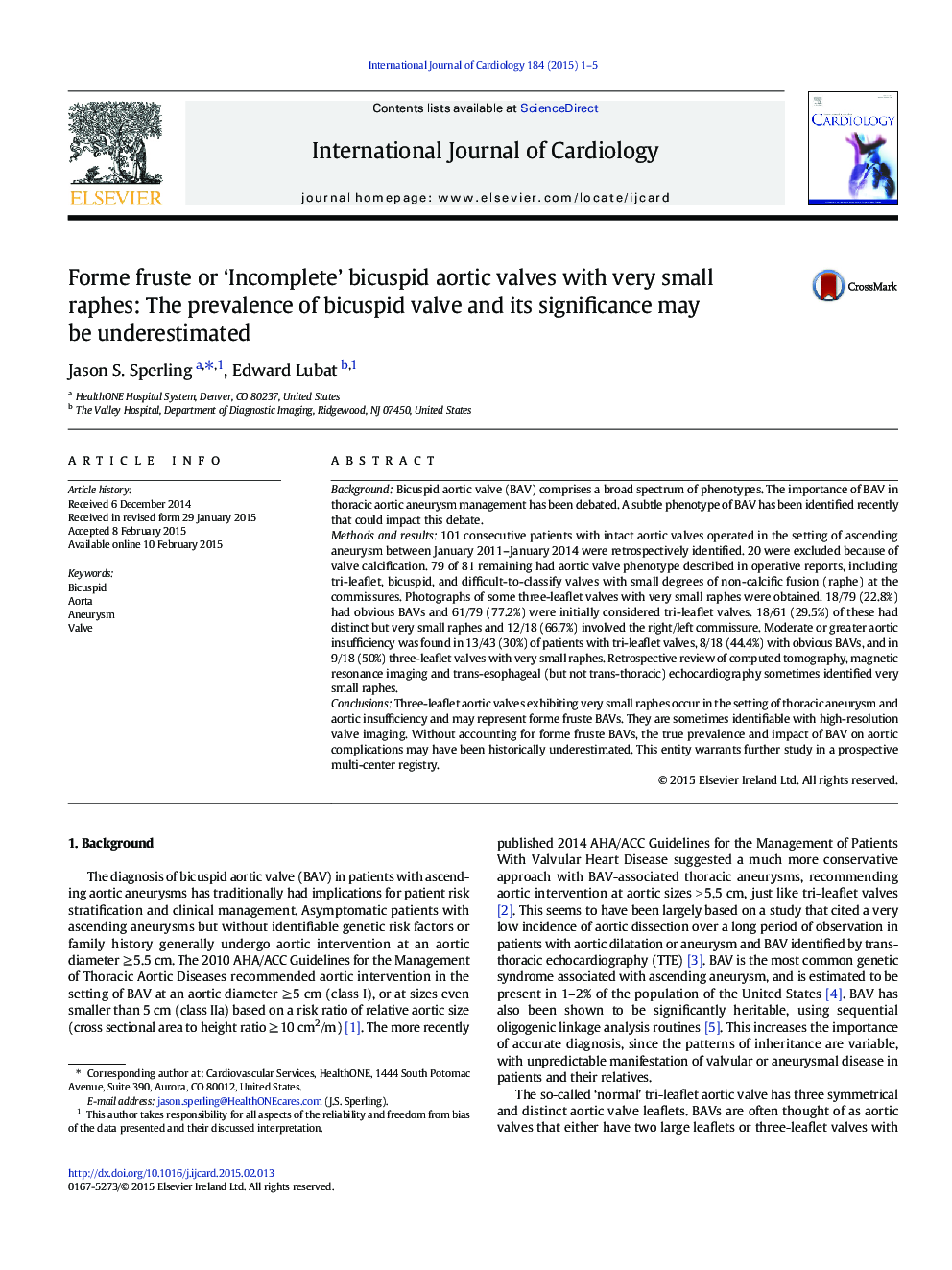| Article ID | Journal | Published Year | Pages | File Type |
|---|---|---|---|---|
| 5968261 | International Journal of Cardiology | 2015 | 5 Pages |
BackgroundBicuspid aortic valve (BAV) comprises a broad spectrum of phenotypes. The importance of BAV in thoracic aortic aneurysm management has been debated. A subtle phenotype of BAV has been identified recently that could impact this debate.Methods and results101 consecutive patients with intact aortic valves operated in the setting of ascending aneurysm between January 2011-January 2014 were retrospectively identified. 20 were excluded because of valve calcification. 79 of 81 remaining had aortic valve phenotype described in operative reports, including tri-leaflet, bicuspid, and difficult-to-classify valves with small degrees of non-calcific fusion (raphe) at the commissures. Photographs of some three-leaflet valves with very small raphes were obtained. 18/79 (22.8%) had obvious BAVs and 61/79 (77.2%) were initially considered tri-leaflet valves. 18/61 (29.5%) of these had distinct but very small raphes and 12/18 (66.7%) involved the right/left commissure. Moderate or greater aortic insufficiency was found in 13/43 (30%) of patients with tri-leaflet valves, 8/18 (44.4%) with obvious BAVs, and in 9/18 (50%) three-leaflet valves with very small raphes. Retrospective review of computed tomography, magnetic resonance imaging and trans-esophageal (but not trans-thoracic) echocardiography sometimes identified very small raphes.ConclusionsThree-leaflet aortic valves exhibiting very small raphes occur in the setting of thoracic aneurysm and aortic insufficiency and may represent forme fruste BAVs. They are sometimes identifiable with high-resolution valve imaging. Without accounting for forme fruste BAVs, the true prevalence and impact of BAV on aortic complications may have been historically underestimated. This entity warrants further study in a prospective multi-center registry.
